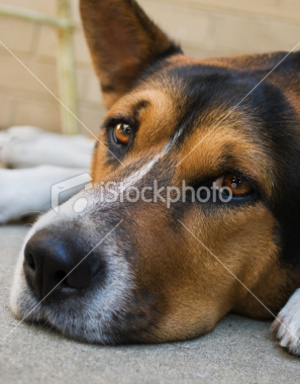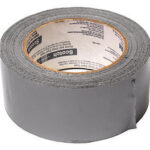Canine eye warts can be very uncomfortable for your dog. Most warts are viral in nature and appear in the form of a growth on various parts of the body, including around the eye. In many cases they clear up on their own, but more severe cases caused by a tumor need further veterinary treatment.
There is a list of three of the most common warts found on dogs. The most widespread wart that affects dogs’ eyes is the viral papilloma wart. Another common wart to affect dogs is sebaceous adenomas, which is a benign tumor of the sebaceous gland (an oil-producing gland present in the skin). The melibomium gland adenoma is a type of wart which is generally present around the eyes, called the “eyelid wart,”
A canine eye wart is caused by a papilloma virus; it is very common and disappears over time. The papilloma is very contagious and easily passed on from dog to dog, though not to humans. The incubation period is 1 to 2 months. The melibomium gland adenoma wart is caused by a tumor inside the glands around the edge of the eye area, which causes the bump or wart. This type of wart can increase in size and needs to be removed surgically. The sebaceous glands can develop small benign tumors which cause warts that can grow in size, needing to be surgically removed. Malignant melanoma is a fatal skin cancer that is diagnosed by small warts on the face area. Over-vaccination of dogs as a cause of warts is a relatively new theory commonly suggested by holistic veterinarians as resulting from an allergic reaction. This is not an officially recognized cause of warts.
Diagnosing a wart is usually visual, according to color, size and shape. The melibomium gland adenoma wart is usually only found around the ocular region; it is characteristically smooth and round in shape. Warts caused by the papilloma virus can also be round but rough in texture. For a more definitive diagnosis of the wart to know the specific treatment required, your veterinarian may need to do a complete blood count test to analyze the red and white blood cells, to determine the effectiveness of your dog’s immune system and obtain a general idea of your dog’s overall health. A urinalysis is also conducted to test your dog’s kidney function and any other health conditions that may be a contributing factor to the occurrence of the warts.
Several mild papilloma viral warts will just disappear in time, the same way they appeared. Your veterinarian can determine the severity of the wart and its treatment. Surgical removal of the wart, when near its maximum size or when regressing, particularly those caused by glandular tumors, or warts that could be damaging to your dog’s health, may be the option presented to you by your veterinarian. He may suggest electro cautery to literally burn away the tissue of the wart under local anesthesia, or cryosurgery, which is similar to electro cautery, to “freeze off” the wart tissue. Discuss all options with your doctor to decide on the best option for your dog’s particular needs.
Your veterinarian will advise you as to any special care once a wart has been removed. You will need to monitor your dog and possibly keep an Elizabethan collar on for a day or two so the wound can heal. There are several steps you can take at home to care for your dog’s minor warts, which prove to be effective. It is best to tackle a wart in its early stage, and these tips could help in treating it. First, try applying vitamin E or castor oil directly onto the wart. It is a safe holistic approach that will soften wart tissue, reduce irritation and help minor warts to disappear. A supplement of vitamin C helps strengthen your dog’s immunity while eliminating free radicals in your dog’s system. Vitamin A is a great antioxidant which can literally eliminate those warts that are cause by the papilloma virus. These suggested at-home remedies are only to help relieve your dog of pain and discomfort, and will only help on minor warts that would normally heal on their own. If your dog has a wart that needs surgical removal, these methods may help to provide some relief for the dog un the surgery can be performed by your veterinarian.



